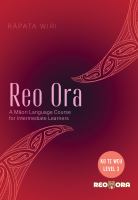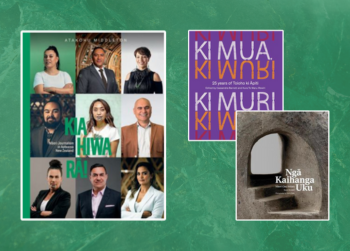Our latest batch of recent picks lean heavily into the arts, suggesting skills to be developed as the days grow shorter and the nights cooler, while also giving a selection of titles you can use to enhance your reo, and gain a greater understanding of Te Tiriti.
 Understanding Te Tiriti : a handbook of basic facts about Te Tiriti o Waitangi / Smail, Roimata
Understanding Te Tiriti : a handbook of basic facts about Te Tiriti o Waitangi / Smail, Roimata
“Understanding Te Tiriti: A Handbook of Basic Facts about Te Tiriti o Waitangi by Roimata Smail distills essential information for every individual in Aotearoa. Leveraging her two-decades of legal expertise in Te Tiriti o Waitangi, Smail presents the facts in this short book in a way that is easy to digest. The handbook uses accessible language and beautiful design to make it easy to understand, leaving room for the reader to absorb these basic facts. Suitable for adults and younger readers.” (Catalogue)
 Māori prosperity and development / Clydesdale, Greg
Māori prosperity and development / Clydesdale, Greg
“Twenty years ago, the Ngāi Tahu Development Corp contracted Dr Clydesdale to write a strategy to enhance the prosperity of its members. This triggered a life-long motive to raise Māori welfare. For decades, government policy has failed to close the gap between Māori and Pākehā. Several reasons exist for this including a failure to understand the drivers of economic prosperity and a vision of history that stops at 1840. Clydesdale argues that the policies have failed because they have placed mana of a few above the prosperity of a people.” (adapted from Catalogue)
 Reo ora : a Māori language course for intermediate learners. Ko te weu level three / Wiri, Kingi Robert J
Reo ora : a Māori language course for intermediate learners. Ko te weu level three / Wiri, Kingi Robert J
“Take your Māori language learning to the next level. This intermediate course teaches twenty key sentence patterns in te reo Māori to extend beginners’ language skills. Dr Rāpata Wiri is a Māori language expert who has developed this course to teach people to speak, read and write te reo Māori confidently. Step through the modules and complete the exercises, and see your Māori language grow.” (adapted from Catalogue)
 Ngā kaihanga uku = Māori clay artists / Riddell, Baye
Ngā kaihanga uku = Māori clay artists / Riddell, Baye
“The rise of an impressive ceramics movement is one of the more striking developments in contemporary Māori art. Clayworking and pottery firing was an ancient Pacific practice, but the knowledge had largely been lost by the ancestors of Māori before they arrived in Aotearoa. After the national clayworkers’ collective, Ngā Kaihanga Uku, was established in 1987, traditional ancestral knowledge and customs and connections with indigenous cultures with unbroken ceramic traditions helped shape a contemporary Māori expression in clay.” (adapted from Catalogue)
 Ki mua, ki muri : 25 years of Toiohi ki Āpiti
Ki mua, ki muri : 25 years of Toiohi ki Āpiti
“Examines the last 25 years of the influential Toioho ki Āpiti programme at Massey University, its global indigenous pedagogical reach, and its ongoing impacts on national and international contemporary art and cultural sectors. Toioho ki Āpiti’s transformative and kaupapa Māori-led programme and its pedagogical model is structured around Māori notions of Mana Whakapapa (inheritance rights), Mana Tiriti (treaty rights), Mana Whenua (land rights) and Mana Tangata (human rights) and is unique in Aotearoa.” (adapted from Catalogue)
 Kia hiwa rā! : Māori journalism in Aotearoa New Zealand / Middleton, Atakohu
Kia hiwa rā! : Māori journalism in Aotearoa New Zealand / Middleton, Atakohu
“Atakohu Middleton explores the history of Māori journalism, examines what makes Māori journalism distinctive and what it is today, analyses news stories to show how Māori perspectives are expressed, and talks with a host of Māori reporters to bring together this comprehensive book on Māori journalism. Well-known Māori reporters share their views on their work, describe how they gather information and produce stories and discuss how they navigate the demands of journalism and tikanga in their work.” (adapted from Catalogue)
Pūkao : the ancient Māori kūmara cultivation game / Brown, Harko
“This book is packed with suggestions on pūkao modes of play, the equipment to use, games whakapapa and an in-depth glossary. It is also liberally illustrated with 30 full-colour photographs. Rituals were once performed daily and seasonally to remind us to be grateful and honouring of te taiao (our environment). When practiced these rituals carried values & attitudes through time as permanent markers and time capsule rongoa.” (adapted from Catalogue)


